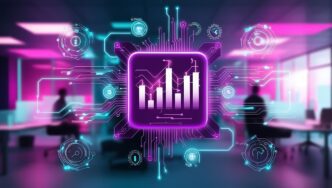Executive Summary
The Trajectory So Far
The Business Implication
Stakeholder Perspectives
The global justice system is on the cusp of a profound transformation, as artificial intelligence and advanced technological solutions begin to permeate courtrooms and legal practices worldwide. This shift, driven by a quest for greater efficiency, accuracy, and accessibility, sees legal professionals, judges, and administrative staff increasingly leveraging AI for tasks ranging from document review and legal research to complex case prediction and even, controversially, judicial decision support. While promising significant advancements in streamlining processes and potentially enhancing fairness, this technological integration also introduces critical ethical dilemmas regarding algorithmic bias, transparency, and the fundamental role of human judgment in upholding justice.
The Dawn of AI in Legal Operations
AI’s initial foray into the legal sector has primarily focused on automating laborious and time-consuming tasks, freeing up human legal professionals for more strategic work. These early applications have already demonstrated significant improvements in operational efficiency and cost reduction.
Automating Legal Research and Discovery
One of the most impactful applications of AI in law has been in legal research and e-discovery. AI-powered platforms can rapidly search through vast databases of statutes, case law, regulations, and legal documents, identifying relevant precedents and information far quicker than human lawyers.
E-discovery tools, utilizing natural language processing (NLP) and machine learning, can sift through millions of documents—emails, messages, spreadsheets—to identify relevant information for litigation. This significantly reduces the time and cost associated with manual document review, making the discovery phase more efficient and less prone to human error.
Predictive Analytics and Case Strategy
Beyond research, AI is now being deployed for predictive analytics, offering insights into potential case outcomes. By analyzing historical case data, including judge rulings, jury decisions, and settlement patterns, AI models can provide lawyers with probabilities of success for different legal strategies.
These tools can help legal teams assess risks, optimize settlement negotiations, and better allocate resources. While not a definitive forecast, these predictions offer valuable data-driven insights to inform strategic decisions.
AI in the Judicial Process: A Contested Frontier
The application of AI extends beyond administrative and preparatory tasks into the very heart of the judicial process, where its role becomes more contentious. This involves the use of AI in areas traditionally reserved for human discretion and judgment.
Risk Assessment and Sentencing Recommendations
Some jurisdictions are experimenting with AI-powered risk assessment tools to inform bail decisions, parole hearings, and even sentencing recommendations. These algorithms analyze various data points about defendants, such as criminal history, age, and socioeconomic factors, to predict the likelihood of reoffending.
The aim is to introduce a more objective and consistent approach to these decisions, potentially reducing human biases. However, these systems have drawn intense scrutiny due to concerns about inherent biases in their training data, which can perpetuate and amplify existing societal inequalities, leading to disproportionate outcomes for certain demographic groups.
Virtual Courts and Remote Hearings
The COVID-19 pandemic accelerated the adoption of virtual courtrooms and remote hearings, demonstrating technology’s capacity to maintain access to justice during crises. AI can further enhance these virtual environments through automated transcription, real-time translation services, and even tools to detect participant engagement or potential misconduct.
While improving accessibility and efficiency, especially in minor cases or initial hearings, the shift to virtual proceedings also raises questions about the digital divide, the sanctity of in-person judicial processes, and the ability to fully assess credibility remotely.
Benefits: Enhancing Efficiency and Access to Justice
The promise of AI in the courtroom is multifaceted, extending beyond mere automation to fundamental improvements in how justice is administered and accessed.
Reducing Backlogs and Expediting Cases
Court systems globally grapple with significant backlogs, leading to delays that can undermine justice. AI can help address this by automating routine administrative tasks, streamlining document processing, and facilitating faster information retrieval, thereby speeding up case progression.
This increased efficiency can reduce the time and resources required to resolve cases, benefiting litigants and the public alike.
Lowering Legal Costs and Expanding Access
The high cost of legal services often creates a barrier to justice for many individuals and small businesses. By automating tasks and making legal processes more efficient, AI can potentially lower overall legal costs.
This cost reduction, combined with tools like AI-powered legal chatbots providing basic advice or form-filling assistance, can democratize access to legal support, particularly for underserved populations who cannot afford traditional legal representation.
Challenges and Ethical Quagmires
Despite its potential, the integration of AI into the justice system is fraught with significant challenges and ethical considerations that demand careful navigation.
Algorithmic Bias and Fairness
Perhaps the most critical concern is the potential for AI algorithms to perpetuate or even amplify existing biases. If AI models are trained on historical data that reflects societal prejudices or discriminatory practices, the algorithms can learn and reproduce these biases in their predictions and recommendations.
Ensuring algorithmic fairness requires rigorous testing, diverse training datasets, and continuous auditing to prevent discriminatory outcomes, especially in sensitive areas like criminal justice.
Transparency and the “Black Box” Problem
Many advanced AI models, particularly deep learning networks, operate as “black boxes,” meaning their decision-making processes are opaque and difficult for humans to understand or interpret. In a legal context, where transparency and the right to understand the basis of a decision are paramount, this lack of explainability is a major hurdle.
Defendants and litigants have a fundamental right to understand why a particular decision was made, making explainable AI (XAI) a critical area of research and development for legal applications.
Data Privacy and Security
The legal system deals with highly sensitive personal and confidential information. Integrating AI necessitates robust data privacy and security protocols to protect this information from breaches, misuse, or unauthorized access.
Ensuring compliance with data protection regulations and maintaining public trust in the security of legal data is paramount for the successful adoption of AI.
Maintaining Human Judgment and Accountability
The ultimate question revolves around the balance between technological assistance and the irreplaceable role of human judgment. While AI can process data and identify patterns, it lacks empathy, moral reasoning, and an understanding of the nuances of human experience that are central to delivering justice.
The legal system must ensure that AI remains a tool to assist, not replace, human judges and lawyers, who bear the ultimate accountability for decisions that profoundly impact lives.
The Evolving Landscape of Justice
The transformation of the courtroom by AI is not a question of if, but how and when. As technology continues to advance, its integration into legal processes will deepen, requiring constant adaptation from legal professionals, policymakers, and the public.
The future will likely see AI handling an increasing number of administrative and analytical tasks, allowing lawyers and judges to focus on complex legal arguments, ethical considerations, and the human elements of justice. Developing robust ethical guidelines, transparent AI systems, and comprehensive regulatory frameworks will be crucial to harnessing AI’s potential while safeguarding the foundational principles of fairness, equity, and human rights within the justice system.








